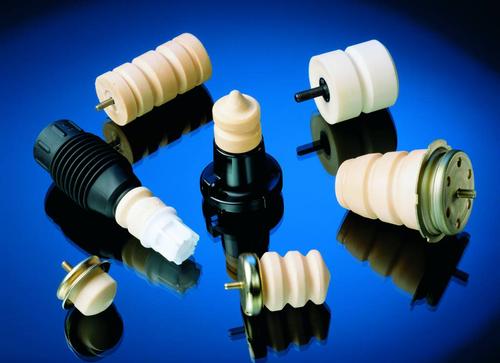BASF Reveals More BMWi3 Materials
May 20, 2014

The BMW i3's carbon fiber composite breakthroughs (which we discussed last month) include contributions from several different suppliers. BASF, which already announced its carbon composite rear seat pan, recently revealed that more of its plastics and composites play a role in several parts of the car. These include the front seat backrests, major reinforcement parts in the carbon fiber body, and reinforcing structural foam. Some of the parts are firsts in a production car.
For example, BASF said in a press release that the BMW i3's front seat backrests are "the first injection molded and uncoated structural component made from polyamide to have a visible surface and to be used in the vehicle interior." Each backrest weighs only 2 kg and integrates several functions.
The chemical company said it developed a material specifically for this type of application, Ultramid B3ZG8 UV. It's made from "a highly UV-stable polyamide 6 compound" and was developed with the Ultrasim universal simulation tool. This allowed "precise numerical simulation" of the backrest, release lever, and belt guide materials, so "the calculated behavior in the crash simulation matched the subsequent tests very accurately," allowing for optimization in early design stages. The integrated seat release lever (which must be able to function in a crash) is made of Ultramid Structure B3WG8 LF, a long glass fiber-reinforced grade. In a different area of the car, Ultramid B3ZG3 is used for the C-pillar cover.
Click the all-electric BMW i3 below to start our slideshow on the new parts.

Several structural parts of the i3's carbon fiber composite body (located between the inner and outer shells) are made of Ultradur polybutylene terephthalate (PBT). The largest is the integral component located in the rear side area. This injection-molded component, which integrates several previously planned components, is meant to keep the two body shells apart. It also forms the rear opening for the side window. The integral component is made of Ultradur PBT B4040 G6, which remains dimensionally stable regardless of its surrounding climate and resists buckling in a crash. More than two dozen smaller Ultradur components (with a combined weight of about 9 kg) are integrated in other areas of the vehicle body to provide reinforcement.
"For the first time in a serial production vehicle, carbon fibers are combined with a polyurethane matrix," Elastolit, in the self-supporting carbon composite rear seat shell, BASF said. The part integrates several functions, such as a cupholder attachment and a storage tray, eliminating assembly work and weight. BASF said its Elastolit has a wide process window, high fatigue strength, and high damage tolerance, even though the part's wall is only 1.4 mm thick.
The highly pressure-resistant Elastolit D polyurethane structural foam is used as a reinforcing material in the roof frame, including the car's A-pillar, and is manufactured into a carbon sandwich composite to support the vehicle's structural rigidity. This material is also used in skis and snowboards.
In the i3's interior, BASF's polyurethane semi-rigid foam Elastoflex E is used for noise and vibration dampening in the instrument panel. In the roof liner, it forms the core material in a sandwich composite. Elastoflex E has a short demolding cycle, low material consumption, and high process safety, the chemical company said. Elastolit R 8919, a UV- and weather-resistant glass encapsulation system, is applied during module production of the car's optional sliding roof. The sliding roof's frame is made of Ultradur B 4040 G6, a low-warpage blend of PBT and polyethylene terephthalate.
BASF said its Cellasto, a micro-cellular elastomer, is used in every other car manufactured in the world, and spring aids made with this material are used by 90% of carmakers. The BMW i3 is no exception -- its front and back axle suspension includes Cellasto spring aids.
Related posts:
About the Author(s)
You May Also Like



